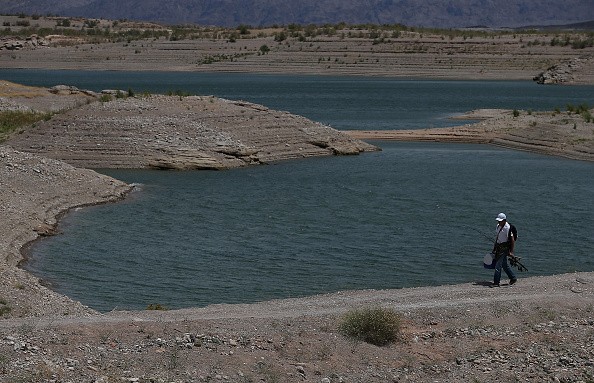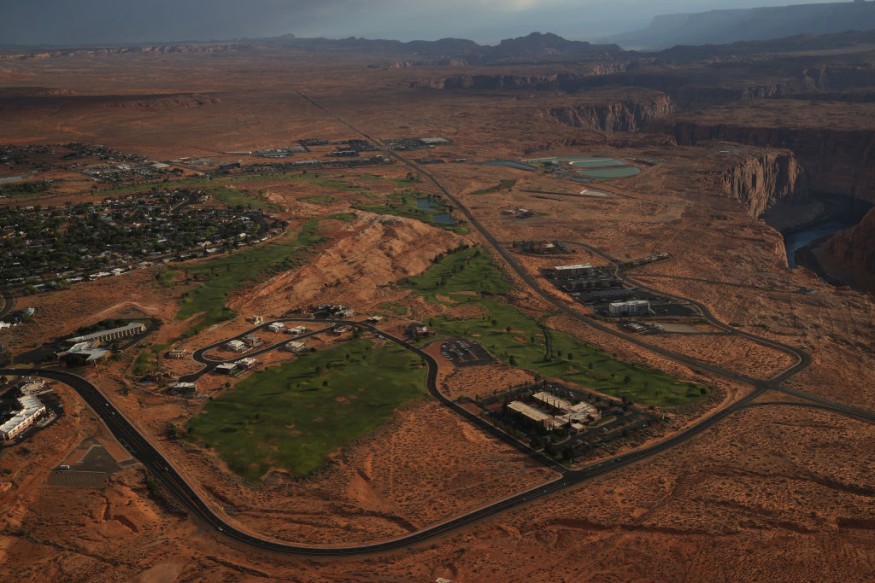Amid severe drought, US officials announced the first-ever water shortage from the Colorado river, a water source that supplies 40 million people in the West, prompting cuts to Arizona farmers next year.
The US Bureau of Reclamation's announcement of a shortage had been expected for months and was prompted by the rapid fall of Lake Mead, which holds water for Arizona, Nevada, California, and Mexico.
After years of chronic overuse and drought exacerbated by climate change, the reservoir in Las Vegas has dropped to its lowest levels since Hoover Dam was completed in the 1930s. It's just about a third of the way to total capacity right now.
To keep Lake Mead from reaching dangerously low levels, state officials from Arizona, California, and Nevada have convened a conference to consider the following possible actions, including further water restrictions.
Lake Mead Losing Stability

Over the years, states, towns, farmers, and others have diversified their water supplies, helping to mitigate the impact of the forthcoming reduction. However, federal officials said Monday's announcement shows that circumstances had worsened quicker than experts expected in 2019 when several states in the Colorado River basin agreed to share water to keep Lake Mead levels stable.
"Today's announcement acknowledges that the hydrology that was anticipated years ago - but that we believed we'd never see - is now here," Bureau of Reclamation Commissioner Camille Touton said.
Read also: Megadrought Causes Lake Oroville to Drop Water Levels to Worrying Degrees: The Lowest Since 1977
Hoover Dam
In the 1930s, the Hoover Dam was built, forming Lake Mead. It's one of many man-made reservoirs that contain water from the Colorado River, which feeds Arizona, California, Colorado, Nevada, New Mexico, Utah, Wyoming, and portions of Mexico with household water, agriculture irrigation, and electricity.
However, water levels in the river's two main reservoirs, Lake Mead and Lake Powell, have been dropping for years and at a quicker rate than scientists expected. In addition, the volume of water flowing from the Rocky Mountains, where the river starts before flows 1,450 kilometers southwest and into the Gulf of California, has been decreased due to scorching temperatures and less melting snow in the spring.
"We're at a point where we have to grapple with how we can continue to thrive with less water, and it's tough," said Sarah Porter, director of Arizona State University's Kyl Center for Water Policy.
Compromise and Agreements
Legal agreements among the seven Colorado River basin states, the federal government, Mexico, and others divide the water held in Lake Mead and Lake Powell. The agreements specify how much water each party receives when water cutbacks will occur and in what sequence the parties must surrender some of their supply.
Arizona, Nevada, California, and Mexico agreed to give up a portion of their water to keep Lake Mead at its current level as part of a 2019 drought contingency plan. However, the voluntary actions were insufficient to prevent the shortage from being declared.
Millions of people in Arizona, California, Nevada, and Mexico rely on Lake Mead for their water.
Water Cuts

The government will implement cuts in 2022 if anticipated water levels fall below a particular level - 1,075 feet above sea level, or 40% capacity. The reservoir is expected to decrease to 1,066 feet by January, according to hydrologists.
More rounds of cutbacks are triggered when predicted levels fall to 1,050, 1,045, and 1,025 feet. As a result, some city and industrial water users may be affected in the future.
For more climate and weather updates, don't forget to follow Nature World News!
© 2025 NatureWorldNews.com All rights reserved. Do not reproduce without permission.




